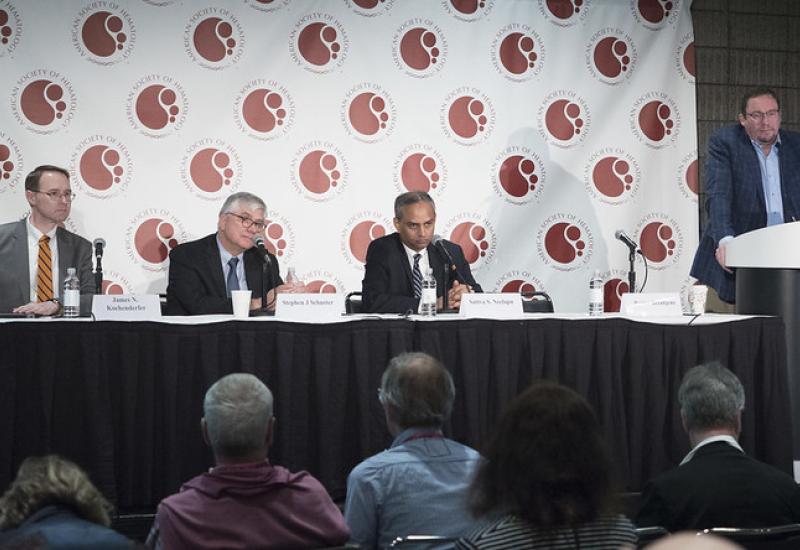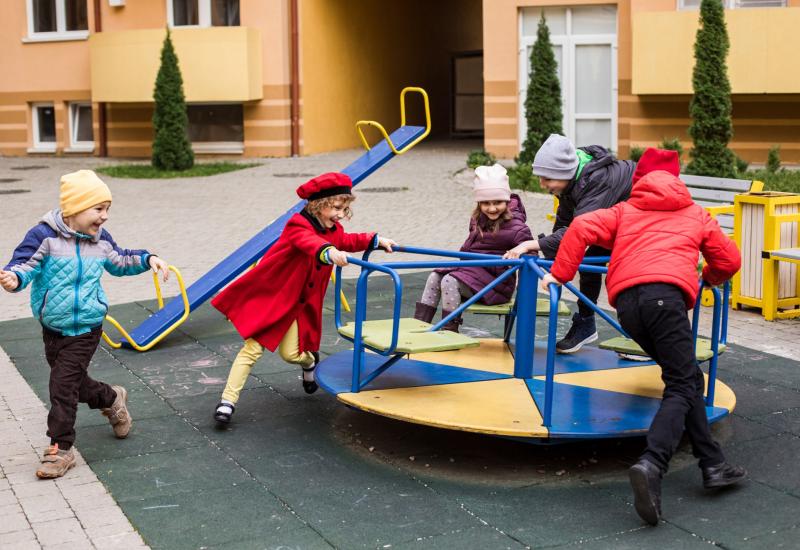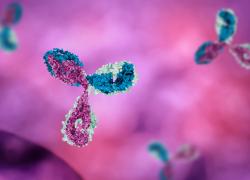
ASH 2025 preview – a new menin battleground
Data will be presented on Kura’s Komzifti and Syndax’s Revuforj in first-line AML.
Data will be presented on Kura’s Komzifti and Syndax’s Revuforj in first-line AML.

Kura and Syndax’s rival menin inhibitors, Komzifti and Revuforj, have recently been approved in relapsed/refractory acute myeloid leukaemia, but the upcoming American Society of Hematology meeting will see data in the new battleground of newly diagnosed disease. With both agents in front-line phase 3 trials, the presentations could help investors gauge their chances here.
Meanwhile, in the AML precursor disease myelofibrosis, Incyte will report the first data with INCA033989, its antibody against mutated CALR protein, which recently impressed in another rare blood cancer, essential thrombocythemia.
However, it’s not all good news for Incyte: that group’s discontinued BET inhibitor INCB057643 will also feature at ASH, with results from the Limber trial in myelofibrosis. Incyte disclosed that it had paused this programme in October, a decision it put down to “pipeline prioritisation efforts”.
However, the ASH abstract reveals that only 15% of patients had a 35% or greater spleen volume reduction (SVR35) at week 24. SVR35 rose to a more impressive 44% at 10mg or above, but there were two dose-limiting toxicities at the 12mg dose – suggesting that it could be difficult to find a therapeutic window for the asset.
Front-line menin
The Komzifti ASH data will come from the Komet-007 trial, testing various combos in both first-line and relapsed AML.
In the front-line setting, the study has already yielded data with Komzifti alongside 7+3 chemo; this year’s ASH will, for the first time, show results for a combination with Venclexta and azacitidine in patients ineligible for intensive chemo.
The data focus on patients with NPM1 mutations, with the ASH abstract showing a composite complete remission (CRc) rate of 84% among 31 patients. There was one case of Komzifti-associated QTc prolongation, at grade 3, although the patient had “concomitant significant electrolyte abnormalities”. One patient also experienced grade 2 differentiation syndrome, a known side effect of menin inhibitors.
The efficacy data look similar to Syndax’s Revuforj plus ven/aza, in the investigator-sponsored Beat AML first-line trial, which found a CRc rate of 79% in NPM1m patients. However, Beat AML also reported a 44% rate of QTc prolongation, and a 19% rate of differentiation syndrome.
Front-line data with Revuforj will also feature at ASH, but as part of a different combo: alongside Venclexta and decitabine/cedazuridine, from an MD Anderson Cancer Center-sponsored study called Save, in patients with NPM1m, and rearrangements of KMT2A or NUP98.
The ASH abstract shows a CR rate of 88%; however, 47% of patients experienced QTc prolongation, and 24% differentiation syndrome.
Kura has long claimed better combinability with Komzifti, and this will be put to the test in various pivotal front-line trials, which have just started or are soon to begin.
Selected ASH presentations in AML & precursors
| Project | Mechanism | Company | Trial | Setting | Abstract | Summary |
|---|---|---|---|---|---|---|
| Revuforj | Menin inhibitor | Syndax | Save | 1L AML (ven/ decitabine/ cedazuridine combo) | 47 | 22 Jul 2025 cutoff: CR 88% (n=17); QTc prolongation 47%; DS 24% |
| Enzomenib | Menin inhibitor | Sumitomo | Ph1/2 NCT04988555 | R/r AML (ven/aza combo) | 765 | CRc 56% (n=18); QTc prolongation 0; DS 1 case |
| Ziftomenib | Menin inhibitor | Kura | Komet-007 | 1L NPM1m AML (ven/aza combo) | 766 | 25 Jun 2025 cutoff: CRc 84% (n=31); QTc prolongation 1 case (gr3); DS 1 case (gr2) |
| CLN-049 | FLT3 T-cell engager | Cullinan | NCT05143996 | R/r AML & MDS | 768 | 9 Jun 2025 cutoff: CRc 30% (n=23) |
| SENTI-202 | CD33 x FLT3 Car-NK | Senti Bio | NCT06325748 | R/r AML | 1044 | 15 Jul 2025 cutoff: CRc 42% (n=12) |
| INCA033989 | CALRm MAb | Incyte | NCT05936359 & NCT06034002 | CALRm MF (+/- Jakafi) | 484 | 8 May 2025 cutoff: monotx wk24 SVR35 30% (n=27); Jakafi combo wk24 SVR35 25% (n=4) |
| INCB057643 | BET inhibitor | Incyte | Limber | MF, MDS, MPN | 907 | 17 Mar 2025 cutoff: wk24 SVR35 15% (n=26), incl 44% with ≥10mg; 2 DLTs in 12mg cohort |
| ICT01 | Anti-BTN3A MAb (activates V9γδ2 T cells) | Ipsen (ex ImCheck) | Ph1/2 Eviction | 1L AML (ven/aza combo) | 652 | CRc 84% (10mg) & 69% (75mg) |
Note: CRc=composite complete remission; SVR35=spleen volume reduction ≥35%. Source: ASH.
Incyte already has a myelofibrosis mega-blockbuster in its Jak inhibitor Jakafi, but hopes to extend its franchise with the anti-mutant CALR antibody INCA033989.
ASH will see the first data with the asset in myelofibrosis, from two phase 1 studies where it was given either as monotherapy (in Jak inhibitor intolerant or ineligible patients) or in combo with Jakafi (in patients who had had a suboptimal spleen response to Jakafi).
24-week SVR35 was achieved by 30% of patients receiving monotherapy, and 25% of those receiving the combo.
Mizuho analysts described the results as “promising”, although patient numbers are small, with only four evaluable subjects in the combo cohort. Still, the data suggest that INCA033989 could outdo GSK’s Ojjaara, which produced an SVR35 rate of 22% in its phase 3 trial, Momentum, and bagged FDA approval in 2023.
ASH 2025 takes place in Orlando, Florida on 6-9 December.
46













